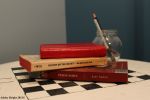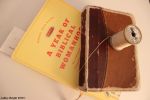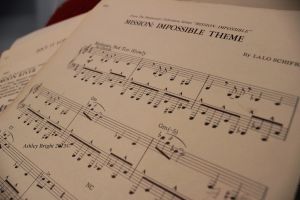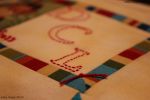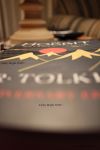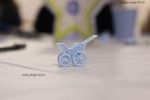
Dear Readers,
It’s the start of a new year. A new year means endless possibilities in the world of literature. But before I start dreaming about the books I’ll dig into this year, I need to look back on what I read in 2012. Yes, it’s time for my annual list of favorite reads. Once again, I’ll split them into the categories of Fiction and Non-Fiction and end the post with my absolute favorite. So, without further ado:
Fiction:
– Wonderland Creek, by Lynn Austin. A lovely historical fiction piece set in the Great Depression, Wonderland Creek follows the adventures of Alice Ripley as she becomes – quite by mistake – a rural librarian delivering books by mule in the mountains of Kentucky. This is a delightful read by an expert storyteller.

Spider’s Web, by Agatha Christie
– Spider’s Web, by Agatha Christie (novel adaptation by Charles Osborne). This play-turned-novel showcases my favorite things about Christie’s writing: her story craft and her subtle, dark humor. Perfectly outlined and perfectly paced, Bravo, indeed!
– Tomorrow We Die, by Shawn Grady. When I picked this one up, I was not expecting such a level of authorship. If you’re looking for an example of the show, don’t tell rule, look no farther. This medical-mystery-action novel doesn’t need a glossary to aid readers; rather, the terminology is brought to life on the page. A strong lead character with a quirky sidekick doesn’t hurt, either.
– North and South, by Elizabeth Gaskell. Another on my ‘I’ve heard good things about this story, but I keep forgetting it’s on my to-read list’ that I read in 2012. My reaction was similar to when I read Jane Eyre. This story is as good as that in Pride and Prejudice, but more gritty and realistic. (The recent BBC adaptation isn’t bad, either!)
– The Hunger Games, by Suzanne Collins. This one has to make the list, simply because of how much the series made me think. Granted, I still hold a grudge against the copy-editor, but I’m working past it. There are ideas in here, something most young adult literature desperately lacks. You just have to take off your Hollywood-tinted glasses before you read.
Non-Fiction:
– The Vampire Defanged, by Susannah Clements. This one tickled my logic-loving, connect-the-dots imagination. Vampires are a touchy subject in literature and film. Somehow they’ve gone from fearsome reflections of depravity to the epitome of awesome. How did that happen? For such a short book, Defanged provides an extensive paper trail on the evolution of literary vampires. 5 stars.

F for Effort, by Richard Benson
– Introverts in the Church, by Adam S. McHugh. Think you’re the only one sitting in church wishing for a bit of peace and quiet? Wrong. There’s nothing wrong with you. In fact, Introverts argues that you have a unique connection to the foundation of the Church. (Having grown up with the oh-so-shiny evangelical church, this one struck a chord.)
– Catch Me if You Can, by Frank Abagnale. I read a biography this year! Biographies aren’t usually books I get excited about, but this one – with action, travel, and a flat-out reckless author – kept my attention. I do not condone the actions of ethics of the author, but I do see a moral in his final occupation: working for the FBI in fraud detection. Cool story, and an interesting way of writing.
– F for Effort, by Richard Benson. If I had traveled anywhere this year, this would have been my choice for airplane read of the year. Short, funny, and travel-sized. We all know kids say ridiculous things, but this focuses on what they write when bored or stuck in school. Two halves make a whale – didn’t you know that?
– Getting Things Done, by David Allen. I confess, I have this listed because of how ridiculous it is. Try reading beyond the introduction without banging your head on the nearest hard surface, either by choice or unconsciousness. Determine whether this process is actually applicable to your life. Skim the rest, and laugh.
Top Read of 2012:

Quiet, by Susan Cain
– Quiet, by Susan Cain. The highlight of my year: a reference guide to introversion. If you or someone you love is programmed to prefer solitude, reflection, and quiet, please read this book. It is not a self-help, pseudo-scientific fluff book written for a bestseller list. No, there is science and experience compiled in one place, in a reader-friendly format no less. Studies about workplace design, educational differences, and social interaction abound. Stories from real people, not case studies, illustrate each point. There’s even an answer to why some kids hate clowns and others seek adrenaline highs.
What were your favorite books of 2012?



